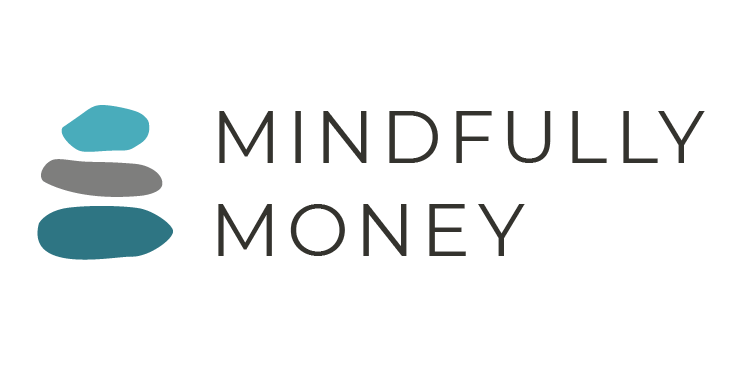Roth IRAs for Beginners
What is a Roth IRA?
Pin this image for later!
A Roth IRA (Individual Retirement Account) is a special account for saving for retirement. Unlike a 401k or 403b, it is not tied to your employer. You contribute to it and manage it on your own. There is no tax deduction for putting money into it—you just transfer money right out of your checking or savings account like you’re paying any other bill. (This is different from a traditional IRA, where those who qualify DO get a tax deduction when they contribute).
Once the money is in the Roth IRA, the money is invested (you use it to buy stocks, bonds, mutual funds, ETFs, etc). The idea is that the money grows over a long period of time until you need it to pay for your life in retirement. Unlike with a regular brokerage account, you don’t pay any taxes on the growth of your money in a Roth IRA.
When you’re ready to take the money out when you’re retired, you don’t have to pay taxes on it. With a 401k or traditional IRA, any money you take out counts as income and you pay taxes on it. But with Roth IRAs, you don’t have to because you already paid taxes on the money you originally put in.
If all of that tax stuff is confusing, just remember, with a Roth IRA you get tax-free money in retirement! So if you withdraw $5000 in retirement, you keep the entire $5000. That’s a pretty awesome deal.
Plus, you aren’t required to take money out of it once you’re retired, so if you don’t need the money, you can just let it keep growing!
How do you open a Roth IRA?
Roth IRAs are widely available from banks, credit unions, and investment/brokerage companies. You might be tempted to open one at the same place you bank. While that is better than not opening one at all, it is best to open one where you have zero account fees and a range of low-cost investment options. Companies like Schwab, Fidelity, and Vanguard are the big ones in this category. Shop around to find one that feels right and offers the services you want.
Remember: actually opening a Roth IRA and contributing is more important than where you open it. Don’t let indecision hold you back.
Once you choose a company, you can usually open a Roth IRA through their website in a matter of minutes. Connect your bank account to make your contribution and you’re ready to go!
Who can contribute to a Roth IRA?
Roth IRAs have two basic requirements for eligibility:
1. In order to contribute to a Roth IRA, you have to have earned income.
So if you’re sitting on a giant trust fund that gives you $100,000 a year (wouldn’t that be nice…) and you don’t actually work for your money, you’re out of luck.
Earned income is what you get when someone pays you. This includes wages, salaries, tips, bonuses, and anything you get paid when you own a business or farm.
Note: a spouse who doesn’t earn income can make a contribution based on their spouse’s earned income. So if you’re a stay-at-home parent and your spouse has a regular job, you can still contribute to a Roth IRA!
2. You can’t make too much money.
Those who earn over a certain amount are ineligible for a Roth IRA (though the tax benefits are so enticing, that legislators currently allow a workaround called a backdoor Roth IRA).
2022 Roth IRA Max Income Limits
In 2022, a single person can contribute the full amount if their MAGI (modified adjusted gross income) is less than $129,000. A reduced amount may be contributed by those whose MAGI is $129,000 up to $144,000. Those with a MAGI of $140,000 or higher may not contribute (except perhaps through a backdoor Roth IRA).
Those who are Married Filing Jointly can contribute the full amount up to $204,000, a reduced amount for $204,000 up to $214,000, and not at all if your MAGI is $214,000 or higher (unless you do a backdoor Roth IRA).
2023 Roth IRA Max Income Limits
The income limits increased slightly for 2023. For single filers, the limit for contributing the full amount is $138,000. A reduced amount may be contributed if you make $138,000 up to $153,000, and is unavailable for those making $153,000 or more.
For those filing Married Filing Jointly, the limit for the full amount is $218,000. A reduced amount may be contributed for those who’s MAGI is $228,000 up to $228,000. Those making over $228,000 are ineligible (except for backdoor Roth IRAs).
Find the complete information from the IRS here.
What is the Roth IRA Yearly Limit?
Roth IRAs have limits on the maximum you can contribute, but there is no minimum. You can open a Roth IRA and put $5 in it if that’s all you’ve got right now. (Some companies have account minimums, so just look for an account with no minimums.)
Roth IRA Limits 2022
In 2022, you can contribute $6000 up to age 50, or $7000 if you are age 50 or older.
Contributions for the 2022 tax year can be made until tax day (typically April 15) of the next tax year. So you can make your 2022 contribution through April 15, 2023. Then you can make another contribution for 2023 anytime before tax filing day of 2024.
Roth IRA Limits 2023
In 2023, you can contribute slightly more: $6500 for those up to age 50 and $7500 for those age 50 and older.
Note: This limit is for both traditional IRAs and Roth IRAs combined. If you have both, you can only contribute a total of $6500 (or $7500 for those 50 and older) between the two accounts. Contributing to a 401k or other workplace plan does not affect how much you can contribute to your Roth IRA.
Tip
You can make your entire contribution all at once, set up a monthly transfer of $541.66 from your checking to your Roth IRA, or divide $6500 by the number of paychecks you get per year and have that amount automatically transferred into your Roth IRA. (So if you get paid every two weeks, you would divide $6500 by 26 and have that amount sent to your Roth IRA each time you get paid.)
Roth IRA Investing
Once you put the money into your Roth IRA, you need to invest it. Otherwise, your money will not grow and you might as well keep it in your regular bank account. The risk of not investing your money is that it won’t grow and will actually lose value due to inflation.
Companies that offer Roth IRAs typically have tools to help you determine which investments are appropriate and how much to invest in each one. If you don’t feel comfortable doing it on your own, an investment advisor can walk you through the process.
Is a Roth IRA Right for Me?
It’s hard to go wrong with a Roth IRA. The general rule of thumb is that a Roth IRA is NOT the best option for those who earn a lot now, but will have lower income in retirement. The reality is that we can’t always know that information. (And if you’re making over the income limits, you’ll need to do a maneuver called a backdoor Roth IRA. It’s best to work with a Certified Financial Planner on that.)
I personally love Roth IRAs because the idea of having a stash of money in retirement that I don’t have to use or pay taxes on is really appealing. Plus, once you’ve contributed enough to a 401k to get any match that is offered, they can be a great, low-cost way (if you choose an account with low fees and low-cost investments) to save extra money for the future.
As I said before, the most important thing is that you save for retirement. Period. You setting aside money for the future will have a way bigger impact than choosing the exact right account. And remember, you don’t have to contribute the full amount to get started. So don’t let indecision or perfectionism hold you back—get started today with any amount you can!












